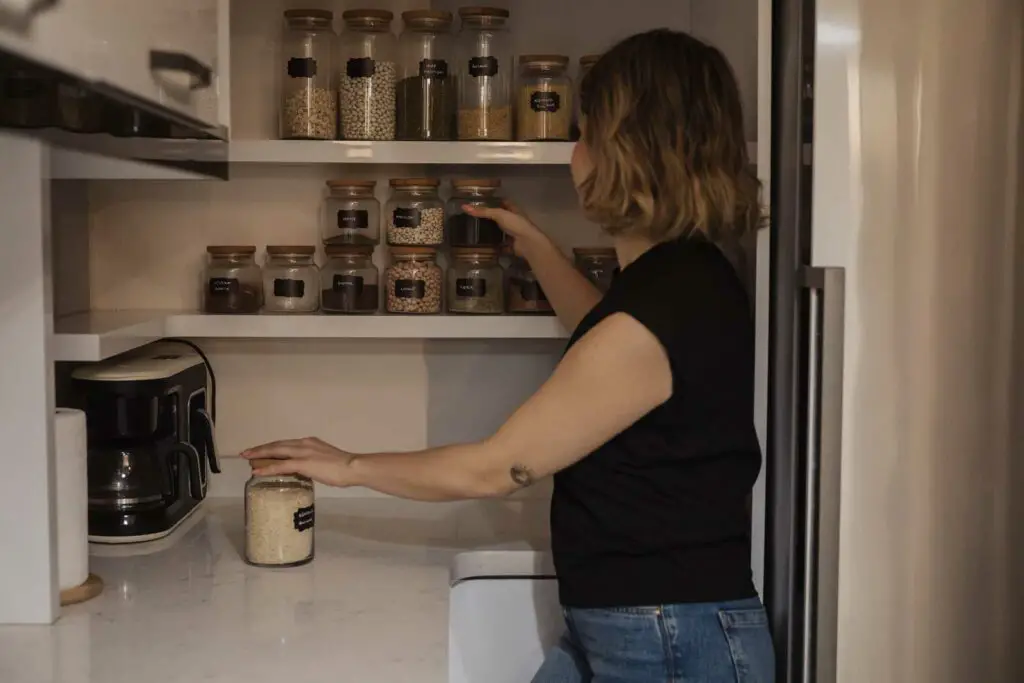Welcome to the part of your kitchen remodel you never knew you needed: Pantry cooling; the secret ingredient to longer-lasting food and a happier kitchen. Overlooked? Often. Essential? Absolutely. In this guide, we’re pulling back the curtain on the secrets of keeping your pantry chill, no matter the climate.
If you ever wondered why your kitchen looks perfect, but your pantry feels like a mini-sauna, you’re not alone. It happens sometimes that you overlook the ventilation for you pantry, focusing on aesthetics over function. But here’s the deal: a well-maintained, cool pantry can be a game-changer for your food storage and kitchen operations.
One of our challenges during our remodeling process in our home was figuring out where the pantry should go in our new kitchen and the facts we learned would have been nice to know beforehand which would have saved us some time and effort.
Now, don’t just skim through! We’re tackling the most pressing questions, like:
- What role does humidity play in pantry temperature control?
- Can air circulation make or break your pantry’s coolness?
- Is a pantry a cool, dry place or a ticking time bomb?
- Why is ventilation crucial in food storage?
- What’s the difference between a pantry and a cupboard anyway?
Stay with me, because we’re about to turn up the cool factor on your pantry (and no, that’s not a kitchen pun!).
- To keep a pantry cool, maintain it at room temperature by ensuring ventilation and circulation, and avoid heat exposure through direct sunlight.
- If you’re remodeling your kitchen make sure your have AC duct work that flows into your pantry.
- Selecting the location of your pantry strategically, away from heat sources like ovens and large windows, is crucial, if you’re renovating.
- Use passive ventilation techniques or install an exhaust fan to improve air circulation in your pantry.
- Cold pantries or root cellars are excellent for storing certain food items that require lower temperatures.
- Ensuring proper pantry organization can help maintain cooler temperatures and extend the shelf life of your food.
- Monitor your pantry’s humidity levels because high humidity can lead to food spoilage.
- In the case of a power outage, consider using portable fans or natural ventilation to keep the pantry cool.
By the way – before we get too far along here, if you want to connect with other homeowners, DIYers, and builders and get more great ideas for your home to make your space the best join my free private Facebook group, Remodel Reality here.
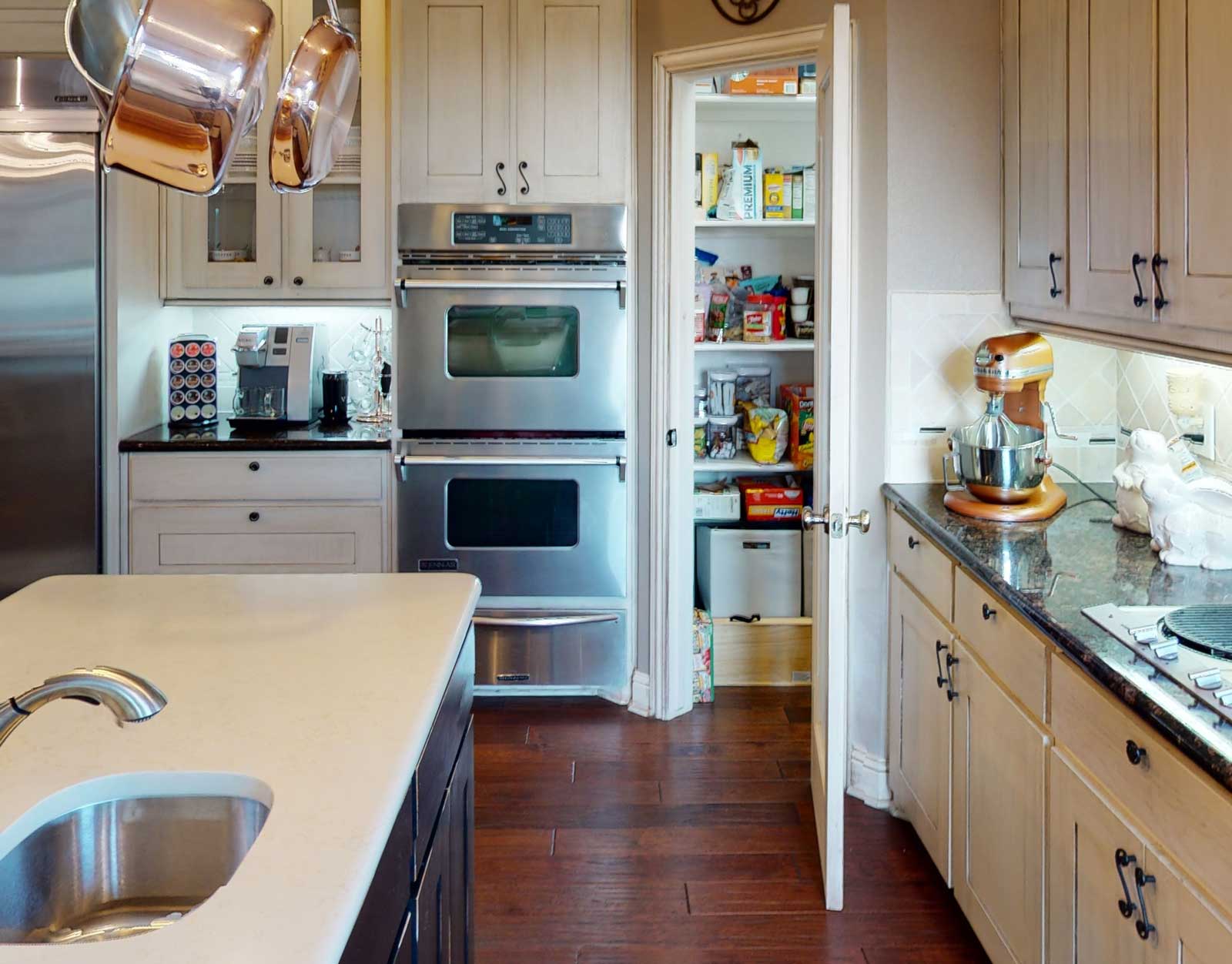
A Chilly Introduction: The Art of Keeping a Pantry Cool
Have you ever wondered why chocolate melts, cans feel warm, and your crisp packets start sticking together in your pantry? Well, you’re not alone. (I remember the great ‘Melted Chocolate Incident of 2021’ with not-so-fond nostalgia). The key lies in maintaining a pantry that’s cool as a cucumber. Buckle up, folks – we’re diving into the world of temperature control and insulation.
Insulation Innovation: The Protector of Pantry Coolness
You’ve seen insulation in your walls and roofs, but guess what? It plays a big part in your pantry too. When done right, insulation can be a game-changer (kind of like that first cup of coffee in the morning).
Use Insulation to Your Advantage
The best way to kickstart your pantry’s transformation is to insulate it properly. Think about it – we use insulation to keep our homes at an ambient temperature, why not apply that to our pantry space? By keeping the heat sources at bay, insulation provides the first line of defense against a hot pantry.
Balance the Temperature
Remember the time when you got sunburned at the beach? Not a good experience, right? Well, your food items feel the same when they’re exposed to higher temperatures. Aim for a balance. The temperature control should keep your pantry cooler, but not freezing (your pantry isn’t aspiring to be a North Pole doppelganger).
Ventilation Victories: The Breath of Fresh Air Your Pantry Needs
We all know that proper ventilation is the secret to a fresh and airy home. But here’s the kicker: it’s also a pivotal player in keeping your pantry cool. If insulation is the coffee, consider ventilation the creamer; they just complete each other.
Invite Natural Ventilation In
Don’t underestimate the power of natural ventilation. It’s like the unsung hero of pantry cooling strategies. You could achieve this with the help of small windows or openings near the pantry door. Remember: small but effective is the goal. The cool air will circulate, and your pantry will be a step closer to becoming the cool pantry it was always meant to be.
Embrace Passive Ventilation
This is where things get interesting. Passive ventilation can work in tandem with air circulation to bring down the temperature. How, you ask? It’s all about using the architectural features of your house. It’s like getting the most out of your gym membership – use all the amenities you’re given! You paid for them, after all.
In my experience, a cleverly located exhaust fan or a well-planned duct system can help. It uses the natural tendency of hot air to rise, creating an efficient airflow. This is the easiest way to get that refreshing breeze without installing an air conditioner.
Keep these two V’s – Ventilation and Insulation – in your playbook, and you’re well on your way to maintaining a pantry that’s as cool as the other side of the pillow. Up next, we’ll talk about how to tackle humidity.
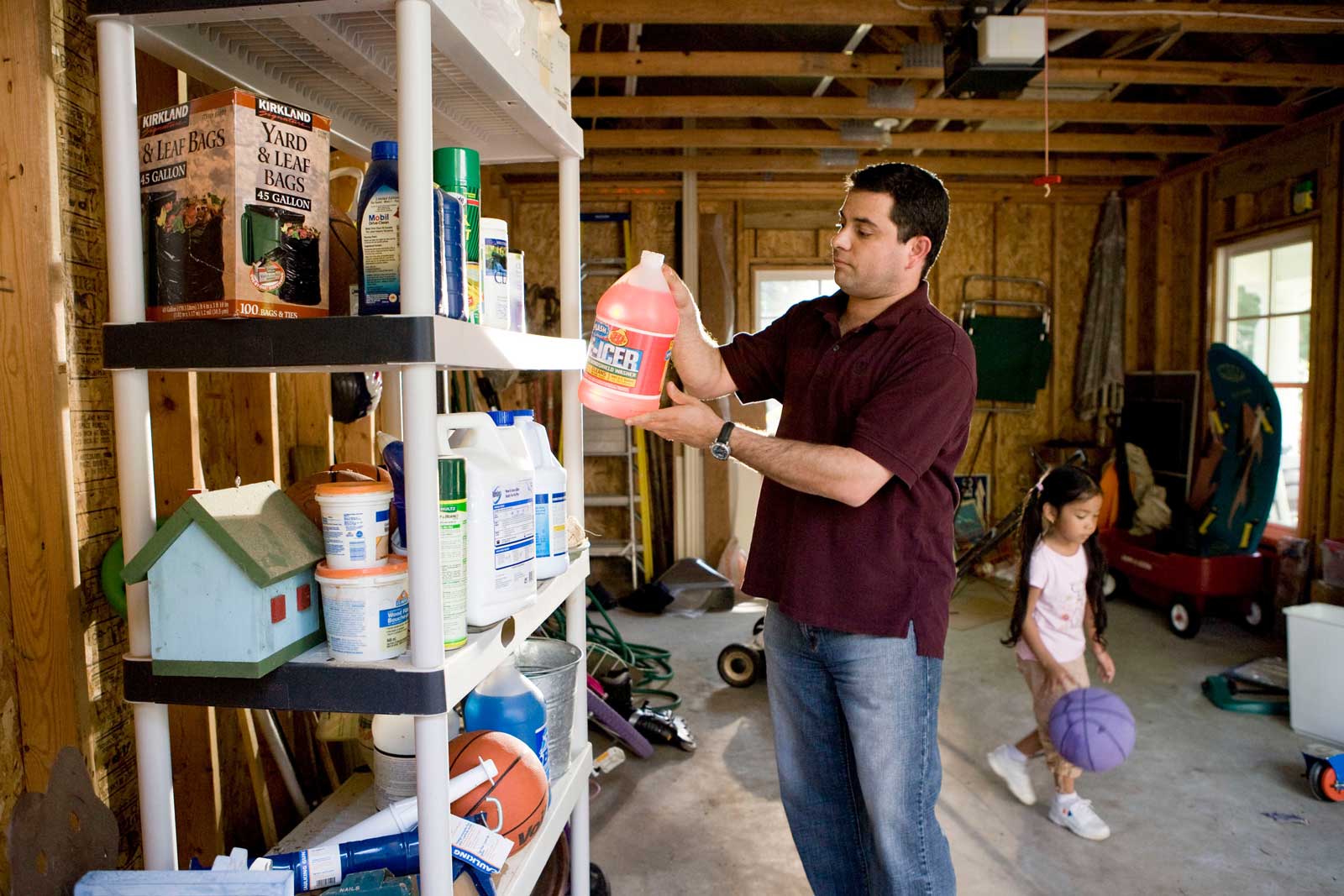
Location, Location, Location: The Real Estate of Pantry Coolness
Just like in real estate, the mantra for the perfect pantry is “location, location, location”. And this isn’t about being close to good schools or coffee shops. We’re talking about finding the best place for your cold pantry. Intrigued? Good, because it’s time to play pantry property agent and seal the deal on that prime location of a pantry.
The ‘X Marks the Spot’: Tips to Choose Your Pantry’s Perfect Place
Choosing where to place your pantry is like choosing a seat at a concert. Too far from the stage, and you miss out. Too close, and it’s deafening. You need that perfect spot where everything is just right.
Avoid Heat Sources
The first step is to avoid any heat sources. You wouldn’t put an ice sculpture in the Sahara, right? So why place your pantry next to the oven or dishwasher? It’s a common mistake many make, and the result is a warm pantry and wilted veggies. Find a spot away from appliances that emit heat. And yes, that includes the beloved coffee maker.
Stay Away from Direct Sunlight
The sun is great for beach days and solar power, but it’s not your pantry’s best friend. Direct sunlight can quickly turn your cool pantry into a sauna for your food. Trust me, no one likes a sweaty loaf of bread. Aim for a location with small windows or no windows at all. A pantry isn’t a sunroom, after all.
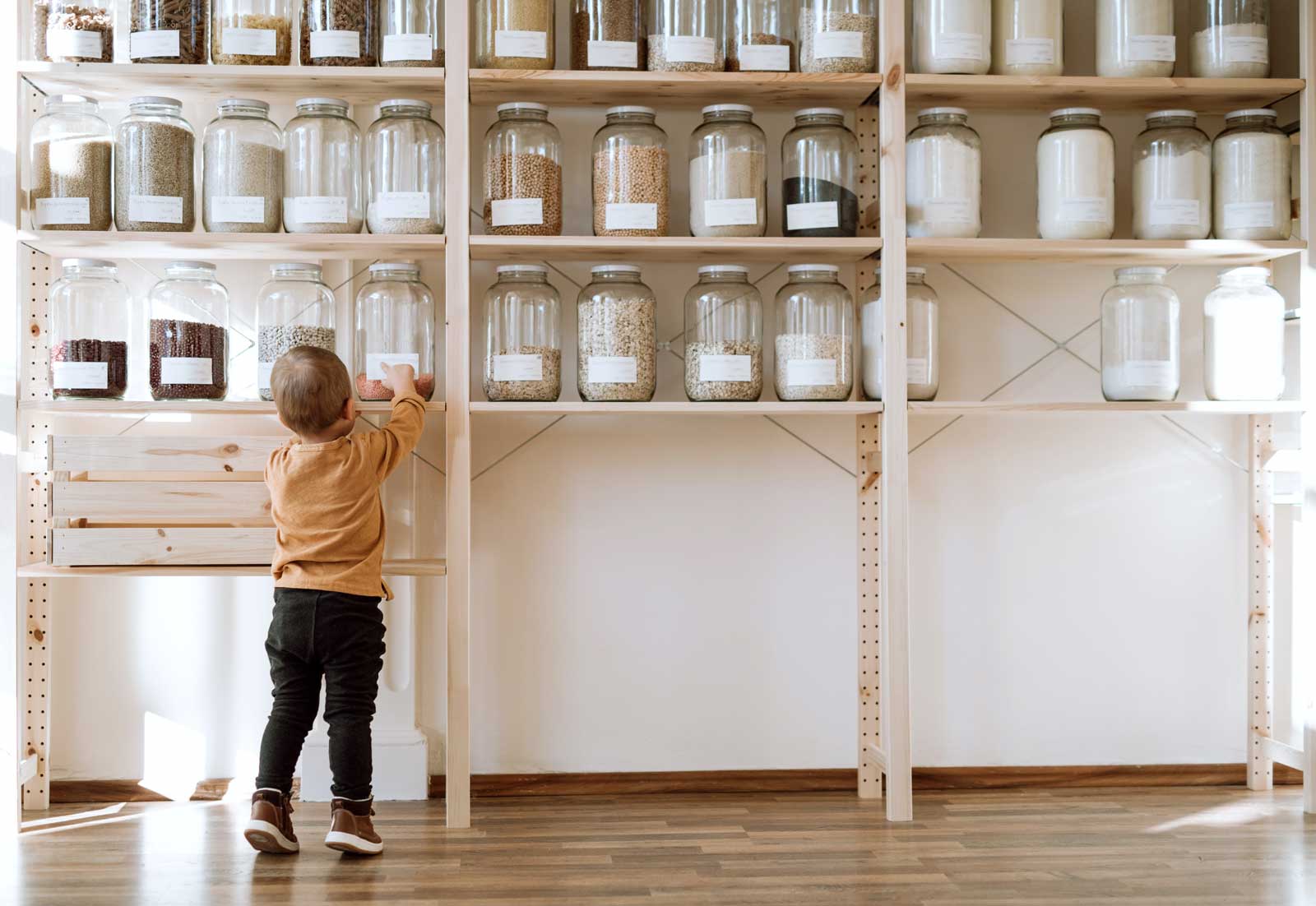
Mother Nature’s Effects: The Natural Factors Impacting Your Pantry
When you’re choosing the location of your pantry, you have to think like a scout. Be prepared for the effects of the natural world on your pantry’s temperature.
Battle the Seasons
Remember, higher temperatures in the warmer months can heat up your pantry, but winter temperatures can play havoc with certain food items too. We’ve all learned the hard way that a can of soda will explode in the freezer, right? So, imagine a cold pantry in winter. Not ideal for your fizzy drinks.
Work with the Architecture
Here’s where you can let your inner architect shine. The structure of your house can either help or hinder your pantry’s temperature. Large windows in the adjacent room? They can heat up the space. However, a pantry tucked away in a small room with minimal exposure to outside elements is the ideal candidate for that cool, dry place.
Through trial and error (and a regrettable incident involving melted chocolate), I found that the location of a pantry plays a vital role in maintaining its coolness. Keep these tips in mind, and you’ll be well on your way to achieving pantry perfection. Up next, let’s explore the secrets to effective pantry organization because, let’s face it, a well-organized pantry is like a well-conducted symphony – pure harmony.
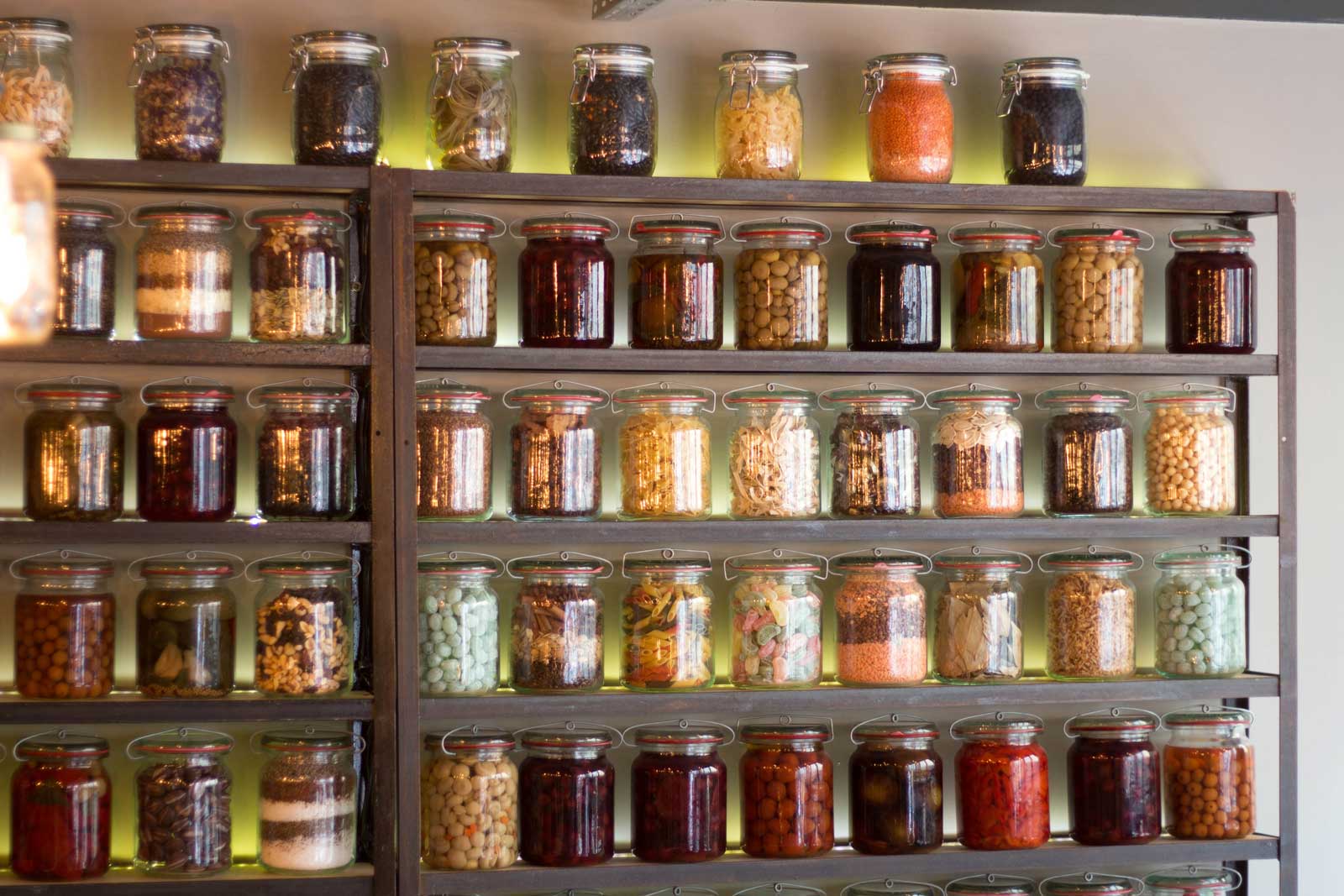
Blueprint to a Breezy Box: Optimizing Pantry Design for Coolness
Picture this: you’ve just found the best place for your pantry. You’ve followed all the advice so far (good job, by the way). But there’s one thing you might’ve overlooked – the pantry door. Yes, even something as seemingly trivial as a door can make a significant difference in maintaining a cool pantry. Let’s see how, shall we?
Select the Right Door
The pantry door is like a bouncer for a club – it controls what gets in and out. And in this case, you want to keep the hot air out and the cool air in. Solid doors, for instance, are a great option for this. They act like a wall, blocking the flow of air and heat. A glass door? Not so much. It’s like a greenhouse for your pantry space, and we’re trying to create a cool pantry, not grow tomatoes.
Door Position Matters
Not only the type of door but where you position it matters too. Place it away from heat sources and direct sunlight. It’s like placing your seat in the shade at a summer BBQ – a game changer, trust me.
Blanket Your Pantry: The Benefits of Wall Insulation
Ever worn a coat in winter? The insulation in the coat keeps you warm by trapping your body heat. Well, wall insulation in your pantry does the exact opposite. It keeps the heat out and the cool in. Sounds neat, right?
Insulate, Insulate, Insulate!
You might think of insulation as something for the roof or exterior walls only. But adding it to your pantry walls can significantly help to maintain a lower ambient temperature. Think of it as your pantry wearing its own thermal vest, but for coolness.
Choose the Right Insulation
When it comes to insulation, you have options. Heat insulation buildings materials like mineral wool, fiberglass, or foam board are all solid choices. Remember, we’re aiming for a Goldilocks scenario here – not too hot, not too cold, but just right.
Cool Materials for a Cooler Pantry
If you’re thinking, “Surely, there’s more I can do to keep my pantry cool?” You’d be right! Let’s talk about using materials that help keep the pantry cool.
Opt for Light Colors
Light colors reflect heat, and dark colors absorb it. It’s basic science and a principle you can apply in your pantry. Go for light-colored walls and shelves. You’ll be surprised at the difference it makes (and how chic it can look!).
Choose Heat-Resistant Materials
Certain materials can better resist heat than others. For instance, metal shelves can become hot to the touch, while wooden or glass ones stay cool. So, the best way? Opt for the latter when fitting out your pantry.
In my experience, even when the warmer months roll in, a well-placed, well-insulated, and well-chosen pantry stays cooler. But remember, a pantry isn’t just a storage area – it’s a vital part of your kitchen. So, while we’re keeping things cool, let’s also keep them accessible and organized. Next up, we’ll look at how to arrange your pantry like a pro, ensuring everything is at your fingertips when you need it. After all, what good is a pantry if you can’t find the peanut butter when the craving strikes?
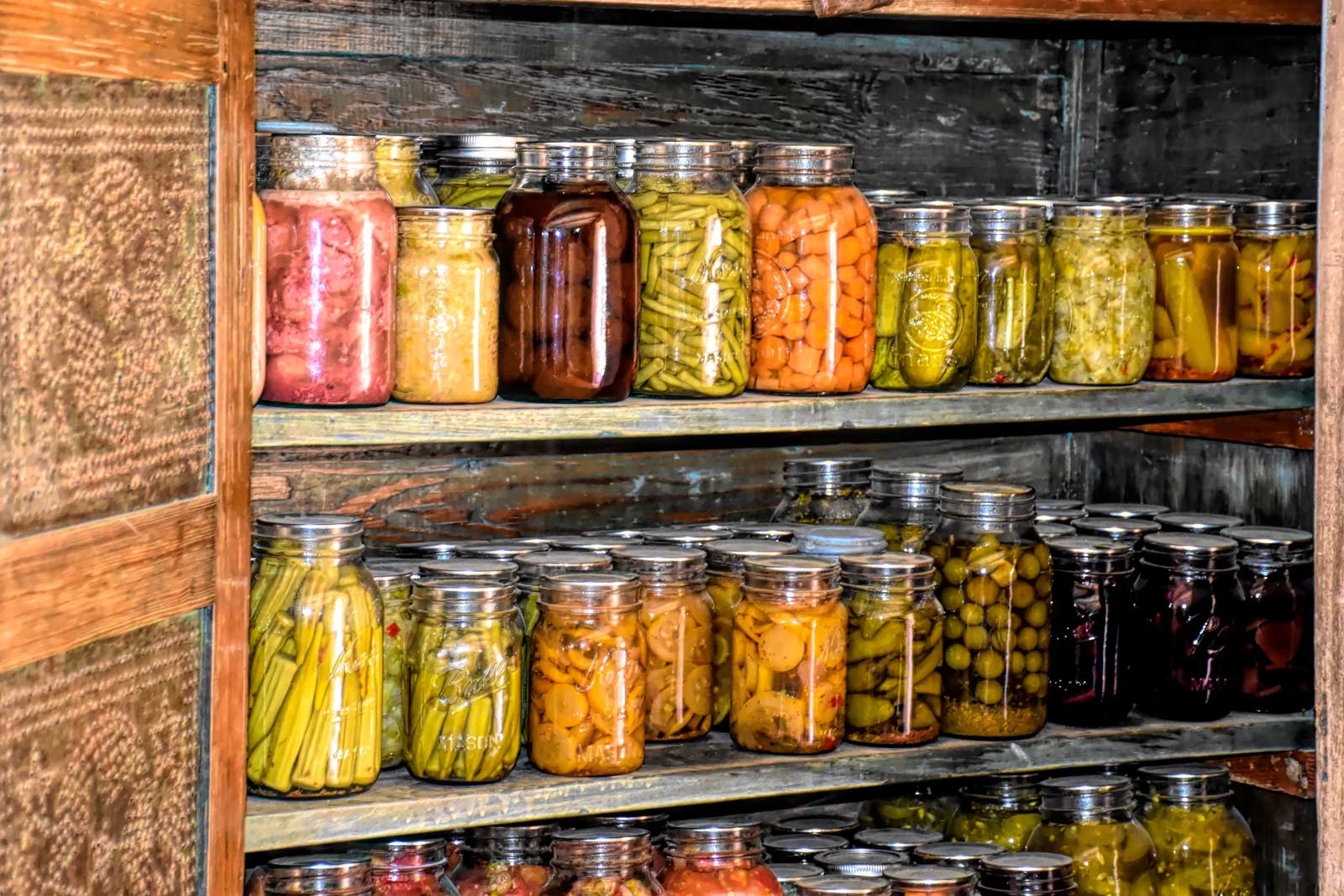
Cool Stash, Cool Pantry: Using Storage Methods to Maintain Pantry Coolness
So, you’ve nailed the location, design, and materials for your cool pantry. You’re on a roll! But here’s another piece to the cool pantry puzzle: how you store your food items. Here’s the scoop on why and how to store your pantry goods right.
Sealed is Cool: Benefits of Using Airtight Containers
Have you ever found a chip bag in the back of your pantry, only to discover the chips have gone stale because the bag wasn’t sealed? It’s a bummer, right? The same thing can happen with other food items. That’s where airtight containers come in.
Keeping Freshness in and Air Out
Airtight containers are just like the name suggests: they don’t let air in or out. This can help maintain freshness and extend the shelf life of many food items, from dry goods to dairy products. It’s the best way to preserve food while also keeping your pantry storage space tidy and organized. Plus, they’re not just good for your food; they’re good for your cool pantry too! By minimizing exposure to warm air, they help to keep your pantry chill. So it’s a win-win!
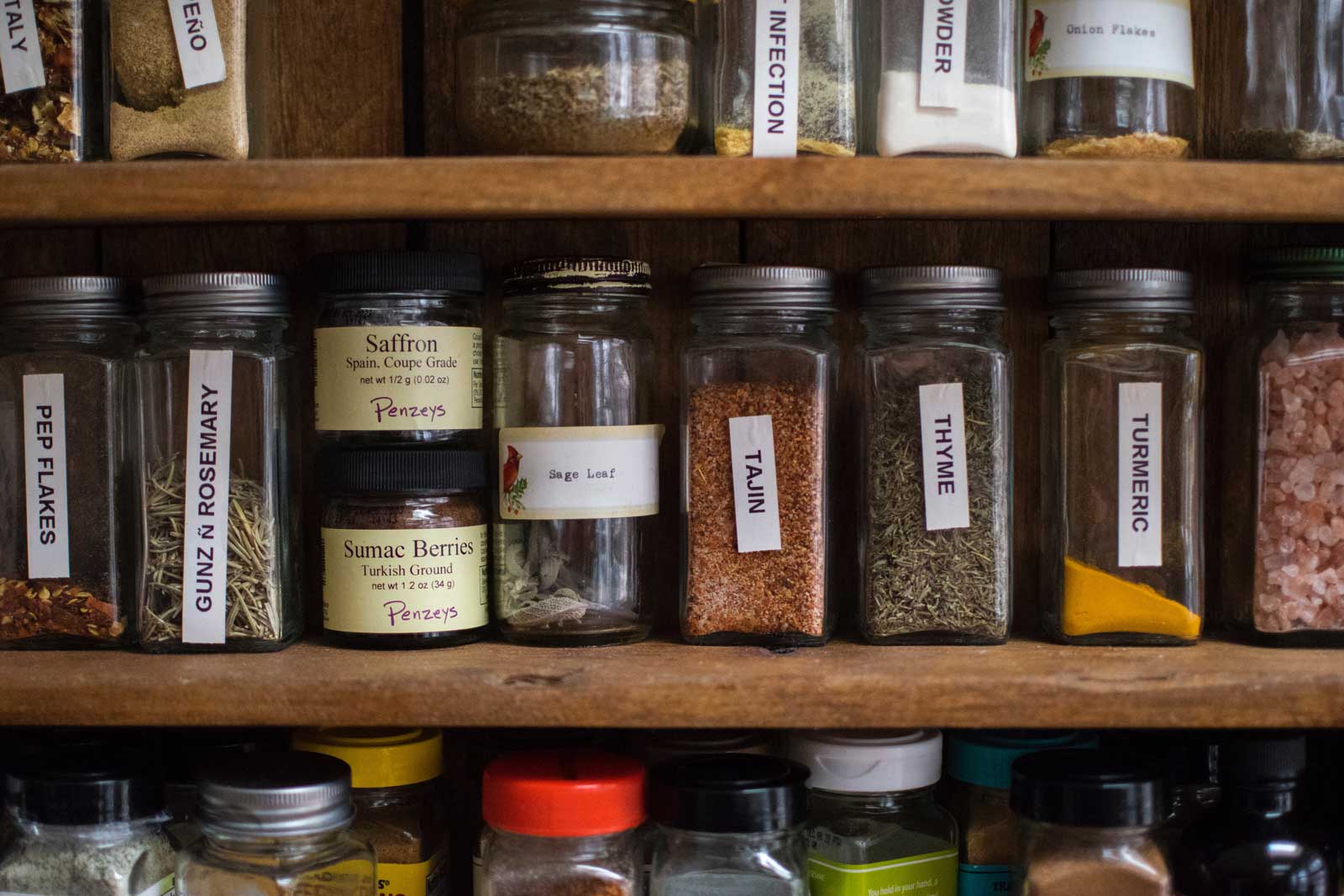
Order in the Pantry: The Importance of Organizing Food Items Properly
Let me share a pantry storage mantra with you: “A place for everything, and everything in its place”. It’s not just an old saying; it’s the key to keeping your pantry cool and functional.
The Right Food in the Right Place
Different food items need different storage conditions. For instance, dry foods like pasta or rice love cool dry places, while fresh produce prefers a slightly humid environment.
Divide your pantry into zones based on these needs. Put heat-sensitive items in the coolest spots, like lower shelves or away from the pantry door. Keep those olive oil bottles out of direct sunlight and that peanut butter in a cool corner.
Rotation, Rotation, Rotation
Don’t just shove new groceries into the first open spot you see. Follow the “first in, first out” rule. Put new items behind older ones, so you use them before the expiration date. It’s a good idea that reduces food waste and keeps your pantry organized.
A Guide to Storing Different Types of Food Items
Ever wonder how grocery stores keep so much food fresh for so long? They follow specific storage rules for different food items. And you can do the same in your pantry.
Storing Dry Goods
Dry goods include things like flour, pasta, and cereals. Store them in airtight containers in a cool dry place. And remember to keep them away from strong-smelling foods like onions. Nobody wants onion-flavored cornflakes, trust me!
Storing Fresh Produce
Not all fresh produce is created equal. Some fruits and veggies (like bananas and tomatoes) release a gas called carbon dioxide that can speed up the ripening (and spoiling) process. Keep these guys separate from other produce.
Storing Dairy Products
Dairy products can be a bit tricky. They need to be kept cold, but most pantries aren’t refrigerator-cold. For these items, the fridge is your best bet. But if you have to store dairy in your pantry (during a power outage, for instance), keep them in the coolest part of your pantry and consume them as soon as possible.
Storing your pantry items properly won’t just keep your food fresher for longer; it will help maintain your pantry’s coolness. It’s a vital part of the ‘cool pantry’ equation, so don’t overlook it! As we venture into our next topic, we’ll explore the benefits of natural and passive ventilation and how they can contribute to your pantry’s coolness.
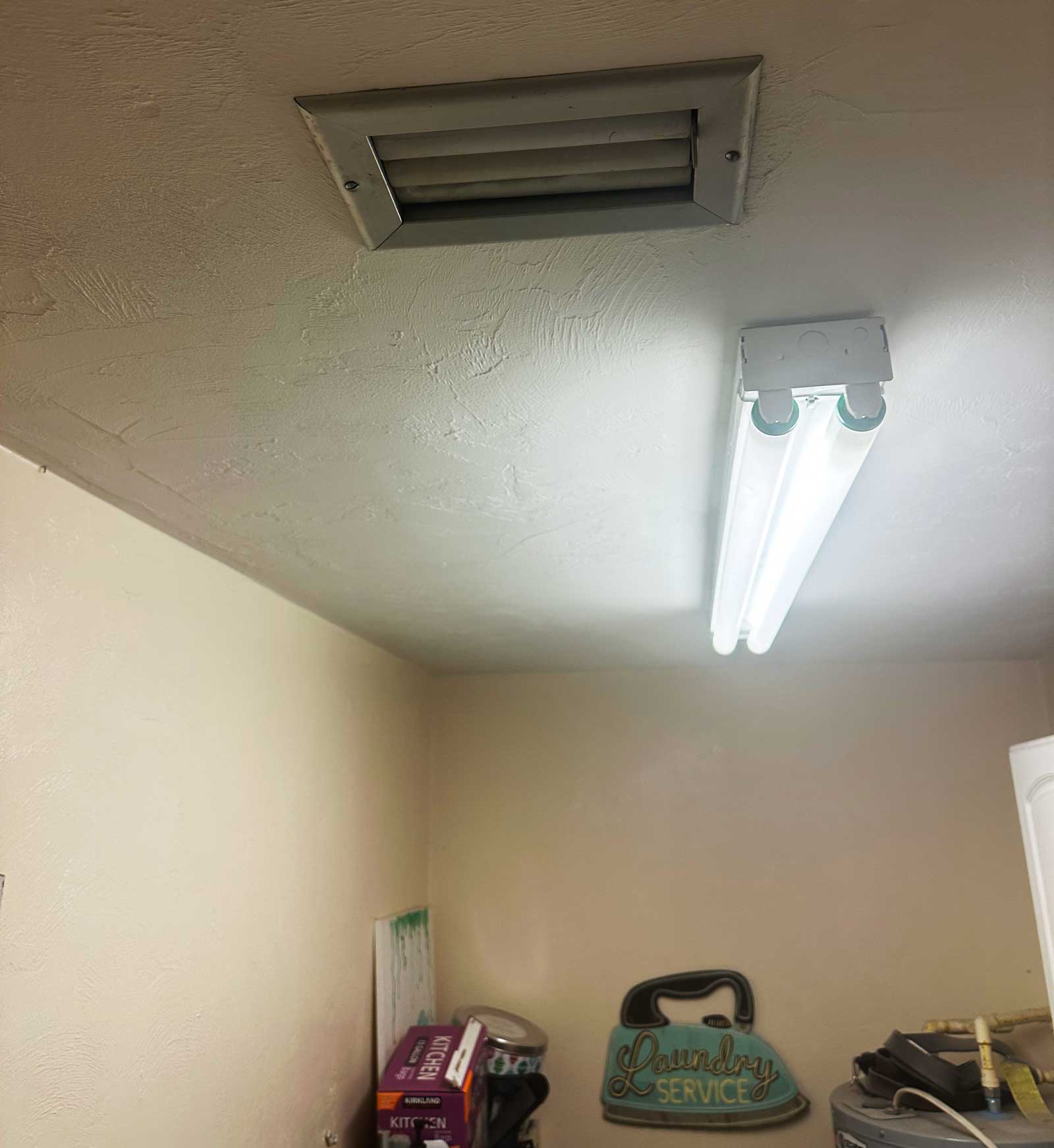
Breathe Easy: Techniques for Active and Passive Pantry Ventilation
You might be thinking, “I’ve got my pantry location, design, and storage methods down. What else is there?” The answer? Ventilation. Without proper air circulation, all your cool pantry efforts might just evaporate. Let’s dive into the world of active and passive ventilation.
The Breeze Effect: The Role of Passive and Active Ventilation in Maintaining Coolness
Let’s start with the basics: What is passive ventilation? And how does it differ from active ventilation? These terms refer to how we circulate cool air through your pantry.
Passive Ventilation: The Silent Breeze
In essence, passive ventilation uses natural airflow dynamics (think: wind) and the design of your pantry (like well-placed vents or small windows) to keep air moving and your pantry cool. It’s like having Mother Nature as your personal pantry air conditioner. And the best part? It’s silent and energy-efficient!
Active Ventilation: Mechanical Helpers
Active ventilation, on the other hand, employs devices like fans and air conditioners to get the job done. It’s your backup plan for when Mother Nature decides to take a vacation.
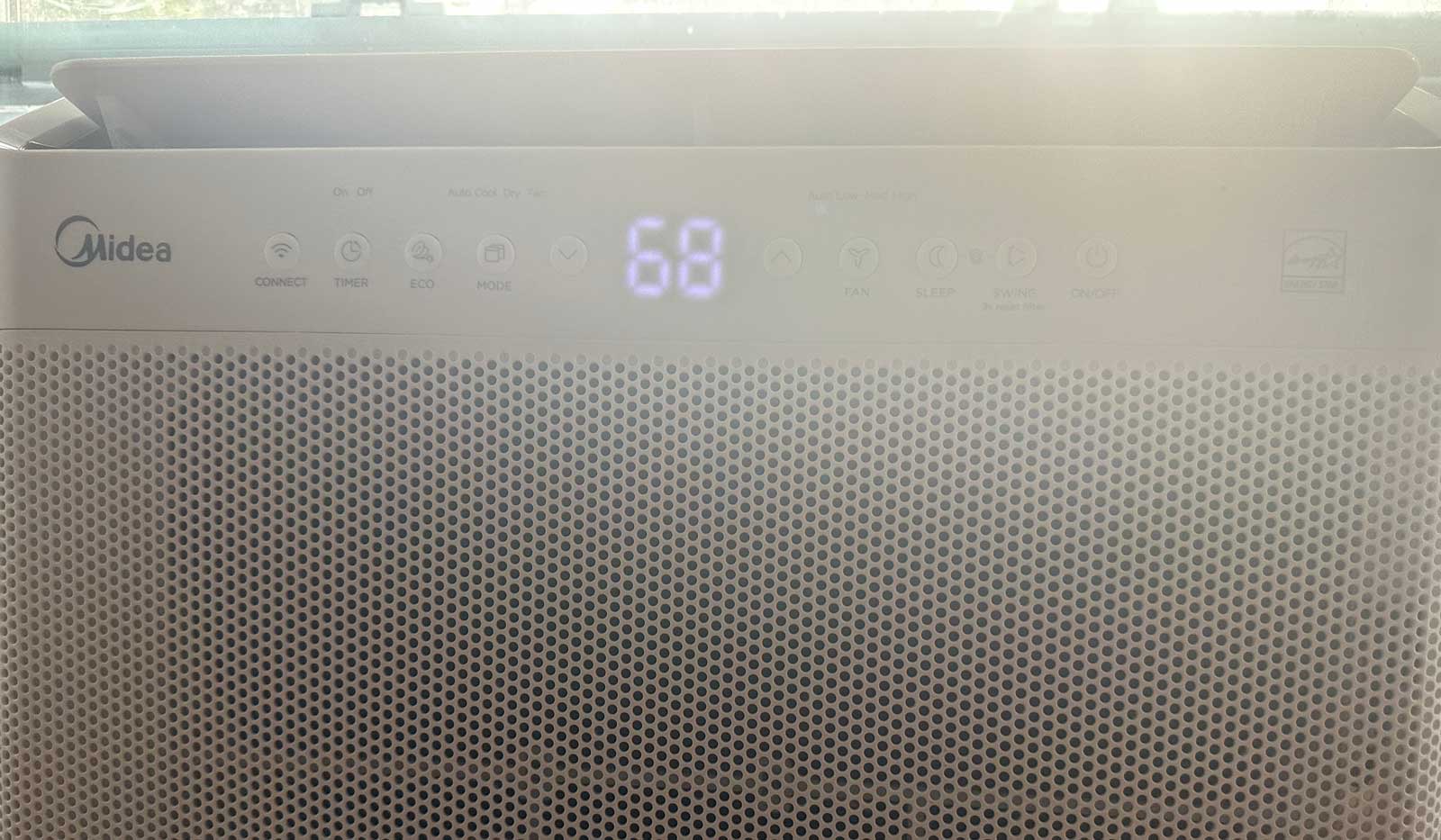
Power Up: The Use of Exhaust Fans, Air Conditioners, and Other Ventilation Systems
You don’t need to splurge on high-tech air conditioning to maintain a cool pantry. Sometimes, simple solutions work best. Here are some ways to mechanically boost your pantry’s coolness quotient.
Exhaust Fans: Out with the Hot
An exhaust fan can work wonders for your pantry ventilation. It sucks out the hot air and allows cool air to flow in. Place it high up in the pantry (remember, hot air rises!) and ensure that the exhausted air has an easy escape route.
Air Conditioners: A Chill in the Air
Sure, you could install a full-fledged air conditioner in your pantry, but that might be overkill (and pricey!). A more cost-effective solution? Portable air conditioners or mini split units. They can cool down your pantry during the warmer months, and you can simply store them away in winter.
Vent Grates: Let the Air Flow
Small but mighty, vent grates are perfect for passive ventilation. Install one near the floor and another high up on the pantry door or wall, creating a pathway for cool air to enter and hot air to exit.
Air Purifiers: Beyond Coolness
An air purifier isn’t strictly a cooling device, but it can improve your pantry’s overall environment. It filters out dust, allergens, and those unpleasant stale food odors.
Let me share a quick anecdote. In my own pantry makeover, I added a vent grate near the bottom of the door and an exhaust fan at the top. It was like night and day! My pantry was noticeably cooler and fresher. And you know what else? My food lasted longer, too.
Proper pantry ventilation is a game-changer. It’s the finishing touch that can turn a good pantry into a great one. So don’t overlook it! In our next section, we’ll wrap things up with some expert tips and tricks for maintaining your cool pantry.
Don’t Sweat It: The Role of Humidity in Keeping a Pantry Cool
Think humidity is only a concern for your hair on a hot summer day? Think again. Humidity plays a big role in maintaining a cool pantry and preserving the freshness of your food. Buckle up, and let’s delve into the lesser-known world of pantry humidity.
Steamy Secrets: How Humidity Affects the Coolness of a Pantry
First things first: what do we mean when we talk about humidity in the pantry context? Humidity, in simple terms, is the amount of moisture in the air. And that moisture can either be a friend or foe to your pantry coolness goals.
Humidity: A Love-Hate Relationship
Low levels of humidity help keep your pantry cool, but too little can dry out certain food items (goodbye, fresh produce!). On the flip side, high humidity can turn your pantry into a tropical jungle, encouraging the growth of mold and bacteria.
Your mission, if you choose to accept it, is to find the Goldilocks zone of pantry humidity: not too high, not too low, but just right.
Humidity Heroics: Strategies for Maintaining the Ideal Humidity Level
Like a secret agent on a mission, you’ll need to use a few tricks and tools to achieve that ideal pantry humidity.
Dehumidifiers: Your Secret Weapon in a Humid Climate
In a humid climate, a dehumidifier can be a game changer. It pulls excess moisture out of the air, helping to maintain low humidity levels in your pantry. Just remember to empty it regularly. The last thing you need is a mini-flood in your pantry!
Hygrometers: The Humidity Gauge
A hygrometer is like a thermostat for humidity. It helps you monitor the humidity levels in your pantry so you can adjust as necessary. Trust me, it’s worth the investment.
Ventilation: The Humidity Balancer
Good ventilation helps to regulate humidity levels, moving moist air out and letting dry air in. You remember our friend the exhaust fan, right?
Moisture Absorbers: The Silent Defenders
Moisture absorbers are the unsung heroes of humidity control. They silently suck in moisture from the air, helping to maintain the right balance. Just place them strategically around your pantry.
Strategic Storage: Humidity Segregation
Store moisture-loving items (like fresh produce) separately from those that prefer drier conditions (like dry goods). This can help you maintain different humidity zones within your pantry.
Now, a quick anecdote. I live in a humid climate, and I’ve seen first-hand what high humidity can do to a pantry. Mold, mildew, the works. It was… not pretty. So, I got a dehumidifier. And let me tell you, it was a game changer. My pantry is cooler, my food stays fresh longer, and mold is a thing of the past.
So, remember, while it’s easy to overlook, managing humidity is a crucial component of maintaining a cool pantry. Don’t let your cool pantry dreams evaporate into thin air due to high humidity. In our next section, we’ll cover… well, you’ll just have to wait and see.
Heatwave Heroics: Maintaining a Cool Pantry in Different Climates
Don’t let the weather win! Whether you’re braving a blistering hot climate or simply dealing with some higher temperatures in the summer months, keeping your pantry cool can seem like an uphill battle. But fear not, you’re about to learn some top-notch strategies to keep your pantry chill, no matter the climate.
Heat Busters: Strategies for Keeping the Pantry Cool in Hot and Humid Climates
Not all climates are created equal. A hot climate poses unique challenges for maintaining a cool pantry. But don’t sweat it, here are some game-changing strategies to keep the heat at bay.
Consider Your Location: The Best Place for a Pantry
In a hot climate, the location of your pantry can be a real game changer. Opt for the coolest part of your house, preferably a room that doesn’t get direct sunlight.
Insulate to Regulate: Temperature Control is Key
Insulation isn’t just for colder climates. It helps keep higher temperatures outside, leaving your pantry nice and cool.
Ventilation is Your Friend: The Power of Air Circulation
Air circulation can really help to maintain a cool pantry in a hot climate. Regularly using an exhaust fan or air conditioner can assist in pushing out that stifling hot air and pulling in some refreshing cool air.
Shade It: Avoid Direct Sunlight
This one might sound obvious, but it’s easy to overlook. Avoid large windows or glass doors for your pantry to minimize the greenhouse effect.
Heat Handlers: How to Manage Higher Temperatures and the Role of Air Circulation
We’ve talked about how to set up your pantry for success in hot climates. Now, let’s dive into the daily grind – managing those scorching summer days.
Cool It Down: The Role of Air Conditioning
When it comes to managing higher temperatures, air conditioning is your MVP. It helps maintain a consistently cool temperature, keeping your food fresh and your pantry cool. Just remember, like a good baseball player, it needs regular maintenance to keep it at the top of its game.
Open Sesame: The Importance of Ventilation
Remember the old saying, “hot air rises”? To let that hot air escape, occasionally open the pantry door or use an exhaust fan. This improves air circulation and can really help cool down your pantry.
Store Smart: Heat-Sensitive Items
Store heat-sensitive items like chocolate or dairy products in the coolest part of your pantry or even in the fridge during the warmer months. No one likes a melted chocolate bar, trust me.
Pro Tip: Use Insulated Bags
An insulated bag can be a great tool for the initial trip from the grocery store to your home. This can prevent your food from getting a heat shock, especially in the hot climate.
Just to share a little story from my own life. I live in a climate where summers get seriously hot. At first, my pantry was more like a sauna than a storage space. That is, until I put these strategies into action. Now, even on the hottest days, my pantry stays impressively cool.
So there you have it. With these strategies up your sleeve, you’ll be well-equipped to maintain a cool pantry, no matter how high the mercury rises. Coming up next, we’re going to explore… But hey, no spoilers! You’ll have to stick around to find out.
Pantry Cooling FAQs: Your Burning Questions Answered
Got questions? Of course, you do! So let’s clear up some of those burning queries with this handy-dandy FAQ section.
Q: Should a pantry be ventilated?
A: Yes, a pantry should be ventilated. Ventilation is essential to promote air circulation, which helps keep the pantry cool and prevents the build-up of stale air and moisture.
Q: How cold should a pantry be?
A: The ideal temperature for a pantry is around room temperature (around 70 degrees F.), but cooler is often better, especially for certain items. Remember, the goal is to keep your pantry cool, not cold.
Q: Does a pantry need to be cold?
A: Not necessarily cold, but a pantry should be kept cool. Keeping your pantry cool helps extend the shelf life of your food items and prevents spoilage.
Q: What’s a “cool” pantry?
A: A “cool pantry” is a pantry that is maintained at a cooler temperature than the rest of the house, ideally around room temperature, to ensure the longevity and safety of your pantry items.
Q: How do I get rid of humidity in my pantry?
A: To reduce humidity in your pantry, ensure proper ventilation and consider using moisture absorbers or dehumidifiers. Storing items in airtight containers can also help protect them from excess moisture.
Q: What should you not put in a pantry?
A: Highly perishable items, such as dairy products, raw meats, and certain fresh produce, should not be stored in a pantry. These items typically require refrigeration to maintain their safety and quality.
Q: Is it OK to have a window in a pantry?
A: While natural light is generally a good thing, it can cause your pantry to heat up if it gets direct sunlight, depending on what type of window you have. If your pantry has a window, use a thick curtain or blinds to block out heat and light.
Q: What is a cold slab in a pantry?
A: A cold slab, often made of stone or concrete, is a feature in some old-style pantries and larders. The slab stays cool even when ambient temperatures rise, helping to keep items placed on it cool.
Q: Why is ventilation important in food storage?
A: Ventilation is important in food storage to ensure good air circulation, prevent the build-up of stale air, control moisture levels, and keep storage areas cool. This helps to preserve the quality of your stored food items.
Q: How can I cool my kitchen pantry?
A: To cool your kitchen pantry, consider using a portable fan or air conditioner, ensuring proper ventilation, and using insulation to maintain a stable temperature. Avoid storing heat-sensitive items in areas of the pantry that tend to get warmer, such as near appliances or light fixtures.
Q: How do you air out a pantry?
A: To air out a pantry, you can open the pantry door and any windows regularly to allow fresh air to circulate. If possible, use an exhaust fan to help draw stale air out of the pantry.
Q: What is the difference between a pantry and a cupboard?
A: While both are used for storage, a pantry is a dedicated space for storing food items, while a cupboard can be used for a variety of storage purposes, including dishes, cookware, and food items. Pantries are often larger and may have specific features to maintain a cool temperature and proper ventilation.
Next Steps
Want to join others who are creating the most amazing home redesigns & renovations and get more tips, tricks and hacks on how to make your home the best it can be?
Join my brand new free private Facebook group, Remodel Reality to connect with other people like you to make your space the best!
